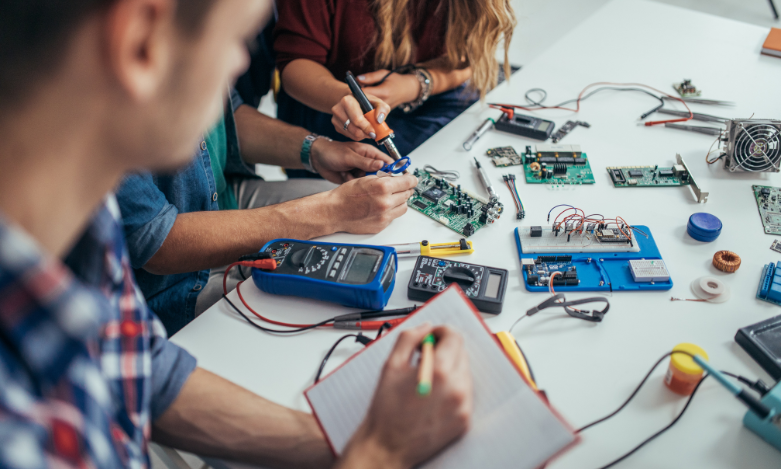Machine Vision Solution Enables Steel Surface Defect Detection
- Aug 11, 2023
- 4 min read
Updated: Mar 26, 2024
*As Featured on NI.com
Original Authors: J.A. Gutiérrez, Tecnalia
Edited by Cyth Systems

The Challenge
Developing an online surface inspection system for hot conditions (above 1,000 °C) where lamination and rolling mill defects occur to reduce production cost through preventive maintenance.
The Solution
Using NI LabWindows/CVI, NI vision, and NI C Series hardware to create SURFIN (Pat.10382359.7-2204), a patented system that analyzes the surface quality of hot processed steel products using special lighting technologies, optical filtering, image processing, and machine learning to detect defects in products, including bars, tubes, billets, slabs, and beam blanks, in the early stages of the production process.
SURFIN LabVIEW User Interface, Right: SURFIN 2.0 Real-Time Camera & Data Acquisition System
Lighting is a core tool used in industrial machine vision applications. The system must control the light used in the application as well as the surrounding lighting, and, where applicable, the emission of the inspected item. This way, we can detect the surface features of the item studied as well as its color, texture, and finish. At times, the energy emitted by the object is greater than the reflected energy, as in the case of incandescent products. In these situations, it is difficult to discern the surface features of the object.
To solve this problem, we developed the SURFIN system to filter the radiation due to high temperatures, and visualize the surface features. This technique provides images as if the object were cold. The solution has a special laser lighting system with wavelengths far from the radiation emitted by a hot metal, and it features a double optical filtration system.

An example of defects detected by SURFIN 2.0 when using vision technology to inspect seamless steel rods.
System Description
The SURFIN system incorporates a tailor-made management and detection application with an engine as a module for the analysis of image features (textures and sizes) and a defect classifier based on artificial intelligence. This module uses models of support vector machines (SVMs). The industrial conditions make the surface of the rolling mill dirty for inspection, causing spots and marks that are difficult to differentiate from true surface defects. Likewise, based on the type of material (batch, thickness, diameter), the product’s surface can greatly vary in appearance, so the system must adapt.
We designed the SURFIN system to work in aggressive and variable conditions, including rough environments with extreme temperatures, rapid processing, presence of steam and oils, and varying levels of dirt. Each production line is different, so one of the key issues for the success of the SURFIN system is its flexibility to adapt to the specific needs of each client. With this flexibility, the equipment has evolved to include a number of improvements by the users.
We use NI LabWindows/CVI as our standard programming tool. Its ease of programming, integration, and power make it particularly suitable for our applications. We also use NI vision to manage pictures, obtain image characteristics, and program the user interface features of the NI 9221 C Series module. To obtain the speed of a rolling mill as an analog signal, we use a USB interface. With this information, the acquisition speed is adapted to the pipe to inspect.
System Improvement
We installed the first SURFIN system in the factory of Tubos Reunidos in 2007 for the hot surface inspection of seamless steel tubes. The setup is composed of an inspection portico with three casings at 180 degrees, each with cameras, lighting, and the necessary optical and electronic devices. The SURFIN system sends images and data via fiber optics to a computer in the control room, where processing to detect and identify defects takes place.
Different problems, including optical, mechanical, refrigeration, and cleanliness, were detected during the development of the first project that, in turn, led to a redesign and improvement of the system.
The experience gave us important improvements in the installation of the SURFIN 2.0 system in the rolling mill of Aceros Inoxidables Olarra, which has a hot inspection of bars and coils. We installed the second system in October 2011. Some of the improvements in the 2.0 system model include:
A more compact mechanical structure to achieve a quicker and simpler alignment of the optical elements as well as to maintain stability over the course of time for great quality images.
A water cooling system for the placement of sensors and lighting closer to the product to inspect, irrespective of whether it is longer, goes through more slowly, or with a greater continuity (time between elements less than or equal to zero).
Software improvements, such as a more flexible user interface with more information, bigger databases, and greater multiuser and remote management capacities.
SURFIN Future
We are working on a request for a new version of SURFIN for Tubos Reunidos for its final processing stages. This system requires real-time processing with speeds of up to 10 m/s to capture and obtain the image features of each element and the classification with the SVM strategy for all of the production. This implies the capture and processing of 36,000 lines per second (2,048 pixels per line times 8 bits per pixel times three cameras). The system provides a high-performing processing throughput of 216 MB/s. We examined several strategies to face this volume of data that are implemented in the new versions. An example is modular processing to execute the application threads in several machines.
Another important issue is the guarantee of correct detection (calibration and verification). Although the software using prerecorded images is simple, the acquisition portion provides great challenges because it is difficult to simulate a defect pattern that can occur in real conditions.
Additionally, we are working on the following improvements: real-time display, new approaches for an intelligent classifier, other active refrigeration systems, and new cleaning systems, one of which is based on self-cleaning nanostructures.
Original Authors:
J.A. Gutiérrez, Tecnalia
Edited by Cyth Systems








